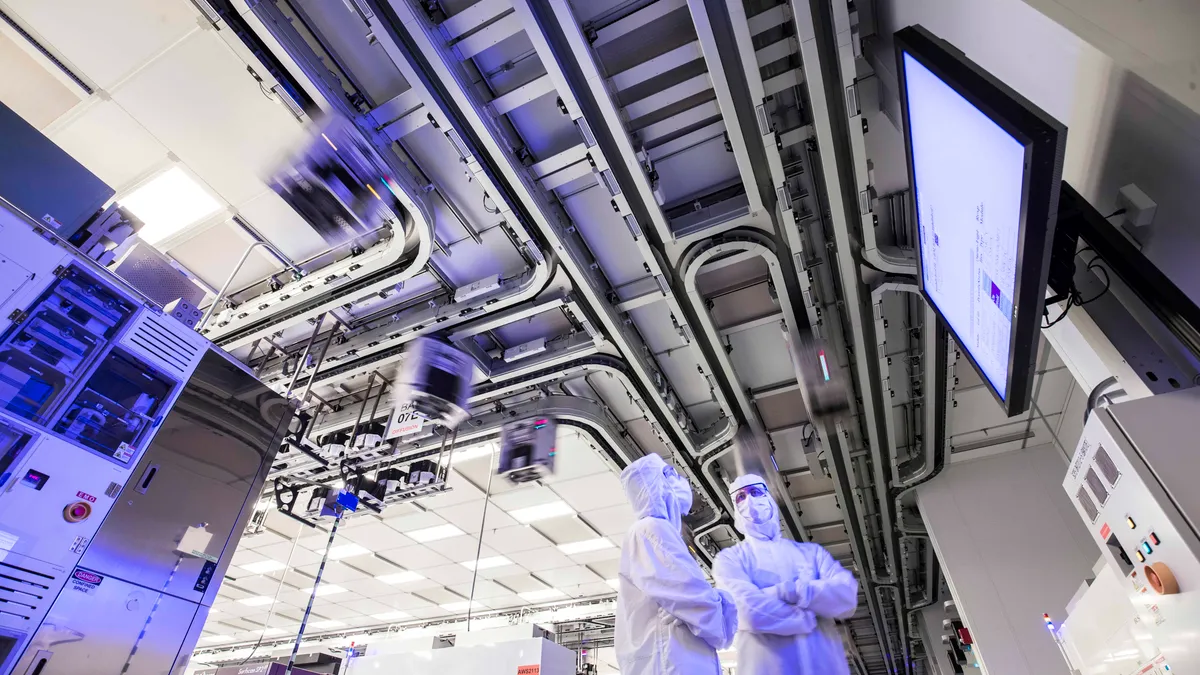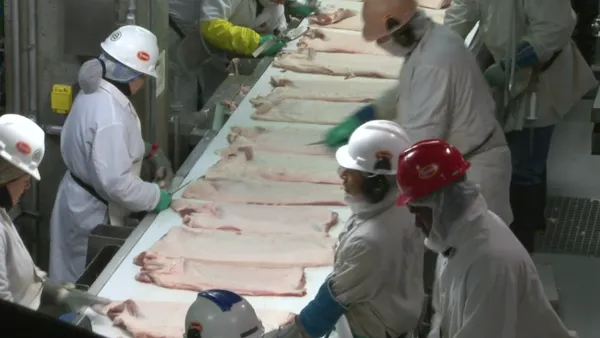Manufacturing orders remained soft last month as companies run down their existing inventories, according to two national Purchasing Managers' Indices this month.
The Institute for Supply Management’s Purchasing Managers’ Index came in at 46.7% in November, unchanged from the month before. A reading of 50.0% or lower indicates the industry is in economic contraction.
With orders low and backlogs draining, Timothy Fiore, chair of the Institute for Supply Management’s Manufacturing Business Survey Committee told reporters on a call Friday the industry is in the "low end" of a trough, where he expects it to remain for some time, especially as companies plan for the year ahead.
"There's a business plan that needs to be met, most likely they're light on purchase orders and I think there will be a bit of reloading," Fiore said on the call. As for where he thinks new orders will be in the next month, the economist added, "I don't expect it to be in the tank, and I don't expect we'll be growing dramatically."
New order levels were up slightly compared to October, with a reading of 48.3%, while production was down 1.9 percentage points to 48.5%. The order backlog index was down 2.9 percentage points, to 39.3%.
The S&P Global PMI index registered a slightly more positive reading at 49.4, down from 50.0 in October. Like ISM, the index attributed the drop to weak demand and low stock levels.
Both indices reported companies continuing to use attrition and layoffs to manage headcount.
"For every company looking to hire there's a company looking to reduce headcount," Fiore said.
S&P Global's economist had harsher words for the fall in employment seen over the past month.
"US producers nevertheless continue to focus on cost cutting by trimming headcounts, and have now taken the knife to payroll numbers for two consecutive months," Chris Williamson, chief business economist at S&P Global Market Intelligence, said in a statement. "Barring the early months of the pandemic, the survey has not seen such a back-to-back monthly fall in factory employment since 2009."
Despite the tough operating environment, industry prices showed some improvement in both indices. Inputs, which include supplier deliveries, inventories, prices and imports, "continued to accommodate future demand growth," according to ISM, and the supplier deliveries index was up compared to October, indicating improving delivery speeds.
Energy and material expenses were also down overall, according to S&P, though resin and steel prices continued to pressure companies.
Three out of 17 manufacturing sectors reported growth last month, according to ISM: food, beverage and tobacco products; nonmetallic mineral products; and transportation equipment.
Looking ahead, Fiore noted the industry's pace of economic improvement is likely to remain sluggish.
"Things are moving very slowly," Fiore said. "As you look back at the last 13 months of PMI decline, it's been very gradual. We're not moving much and generally manufacturing does move a lot.”













